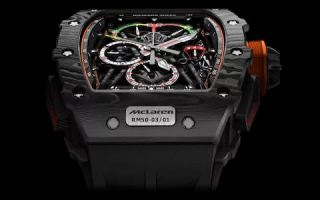Sep 3 2018
The world’s lightest mechanical chronograph watch was launched in Geneva, Switzerland in January 2017, highlighting ground-breaking composite development by using graphene. Recently, the research behind the project has been reported. The exclusive precision-engineered watch was a result of a partnership between The University of Manchester, Richard Mille Watches and McLaren Applied Technologies.
 Image credit: The University of Manchester
Image credit: The University of Manchester
The RM 50-03 watch was made using an exclusive composite integrating graphene to produce a robust but lightweight new case to house the watch mechanism which weighed only 40 g in total, as well as the strap.
The partnership was an application in engineering excellence, exploring the approaches of properly aligning graphene within a composite to derive the most of the 2D materials superlative properties of mechanical strength and stiffness while negating the need for the incorporation of other, weightier materials.
Presently, the research behind this exceptional watch has been published in the journal, Composites Part A: Applied Science and Manufacturing. The research was mainly carried out by a team of researchers at The University of Manchester’s National Graphene Institute.
In this work, through the addition of only a small amount of graphene into the matrix, the mechanical properties of a unidirectionally-reinforced carbon fibre composite have been significantly enhanced.
This could have future impact on precision-engineering industries where strength, stiffness, and product weight are key concerns such in as aerospace and automotive.
Professor Robert Young, Lead Researcher
The small quantity of graphene used was incorporated into a carbon fiber composite with the goal of enhancing stiffness and decreasing weight by requiring the use of less overall material. Since graphene has high levels of strength and stiffness, its application as a reinforcement in polymer composites shows an enormous potential for further improving the mechanical properties of composites.
The final results were attained with just a 2% weight fraction of graphene incorporated into the epoxy resin. The resulting composite with graphene and carbon fiber was then tested by tensile testing and the mechanisms were exposed largely by using Raman spectroscopy and X-ray CT scans.
The advantages of this study demonstrate a simple technique which can be integrated into current industrial processes, enabling for engineering industries to gain from graphene’s mechanical properties, such as the bodywork of high-performance cars or the manufacture of airplane wings.
The research team discovered that when comparing with a carbon fiber equivalent specimen, the incorporation of graphene greatly enhanced the tensile stiffness and strength. This took place when the graphene was dispersed through the material and aligned in the fiber direction.
Dr Zheling Li, a University of Manchester Research Associate said: “This study presents a way of increasing the axial stiffness and strength of composites by simple conventional processing methods, and clarifying the mechanisms that lead to this reinforcement.”
Aurèle Vuilleumier R&D Manager at Richard Mille said: “This project is a perfect example of technology transfer from the university to the product. The partnership with McLaren Applied Technologies allows a broad diffusion of graphene-enhanced composites in the industry. As a tangible result, a world record light and strong watch was available for our customers: the RM 50-03.”
Dr Broderick Coburn, Senior Mechanical Design Engineer at McLaren Applied Technologies said: “The potential of graphene to enhance composites’ structural properties has been known and demonstrated at a lab-scale for some time now. This application, although niche, is a great example of those structural benefits making it through to a prepreg material, and then into an actual product.”
The University of Manchester will soon be celebrating the inauguration of its second world-class graphene facility, the Graphene Engineering Innovation Centre (GEIC), scheduled to open later this year. The GEIC will allow industry to work together with academic expertise to convert research into prototypes and pilot production and quicken the commercialization of graphene.